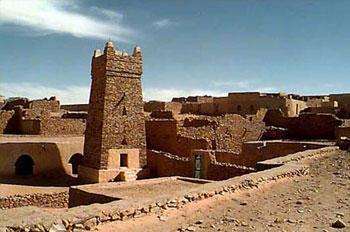Add your site

Submit your web site to 100% SEO friendly, human edited travel directory with high quality links and improve your search rankings.
Get listed now!

Mauritania’s biggest attraction is the very desolation that keeps so many people away. ln this mysterious, wild, confounding country resources are scarce and sand is plentiful. Among the vast, blank, shifting dune-fields and strange, flat-topped mountain ranges, the only fertile land is found in the oases along a narrow strip bordering the Senegal River. Set in this severs landscape is a deeply traditional lslamic, inhabited by warm, yet reserved, humorous people, measuring out endless of hospitality in glasses of tea with ten sugars.
Best time to visitDecember to March, when it’s cooler (but still hot).
Essential ExperiencesNavigating the empty sea of Saharan dunes by camel Exploring the ruins of Saleh, legendary capital of the medieval empire of Ghana Lingering in Chinguetti-the seventh-holiest city of lslam Visiting Nouakchott’s wharf and fish market, Port de Peche Succumbing to the enchantment of the old quarter of Ouadane Counting two million sandpipers in Park National du Banc d’Arguin.
Getting under the skinRead Michael Asher’s recounting of the first west-to-east camel crossing of the Sahara in lmpossible Journey: Two Against the Sahara.
Listen to the stunning combination of Arabic melodies and African percussion by Diva Dimi Mint Abba.
Watch Abderrahmane Sissako’s poignant Hermakano (Waiting for Happiness),set in Nouadhibou.
Eat at a mechui, a traditional nomad’s feast, where an entire lamb is roasted over a fire and stuffed with cooked rice (cutlery optional).
Drink glasses of strong, sweet mint tea.
In a wordSalaam aleikum (hello).
TrademarksEndless sand; oases; desertification; birdlife; ‘controlled democratisation’.
SurprisesOnly in 1980, when there were an estimated 100,000 Haratin slaves in Mauritania, did the government finally declare illegal, although there are regular round-ups of antislavery activists; Maurtania boasts the longest, dustiest train in the world.
The old quarter of Ouadane is one of the most enchanting semighost towns of the Sahara. As you arrive across the sands or plateau from Atar or Chinguetti, the stone houses seem to tumble down the cliff like an apparition, and they change colour depending on the time of day. From the base of the town, the lush gardens of the oasis stretch out before the desert again takes hold.
© 2025, by Travel and Tourism Directory